Chairman’s Trip To India, February/March 2024 (Part 4)
Darjeeling
Paul Dean, Chairman of BACSA, and his wife Moira recently visited several historical sites in India, as part of a long-awaited extended trip to mark their retirement.
This post, the fourth in a series, covers places visited in Darjeeling. Previously published posts covered their visits to Hyderabad, Aurangabad and Agra (11/05/2024), to Orchha, Khajuraho and Lucknow (28/06/2024), and to Varanasi (12/07/2024).
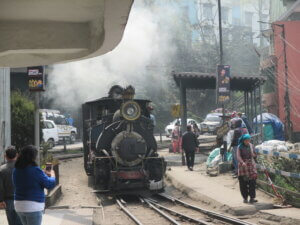
‘It’s a slow but dramatic journey up to Darjeeling on a railway like nothing I have experienced before. It is meticulous in following the road, constantly crossing it or going along it, sharing it with vehicles of all descriptions, pedestrians and animals, not to mention shops and market stalls. And more or less everything, except the cows, gives way to it. We loved it.
In Darjeeling we stayed at the Windamere Hotel (the name deliberately spelled that way to avoid possible confusion with the English lake), which was an almost equally treasurable experience.
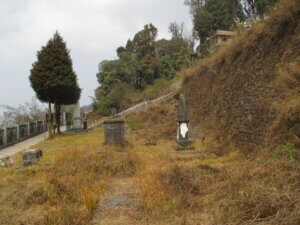
(Photo: P Dean, 2024)
‘Note the obelisk tomb of Lieutenant General Lloyd, the ‘Discoverer of Darjeeling’
(according to the ASI sign), underneath the trees on the left’ (P Dean).
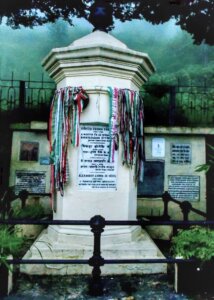
After a day of sightseeing, we spent the following morning at St. Andrew’s Church, where we met the vicar, Rev Rupert Lai. We were then taken to the Old Cart Road cemetery where we met a number of local people interested in a potential project there. It contains two tombs under the care of the ASI: one of Lieutenant General Lloyd, the ‘Discoverer of Darjeeling’, who died in 1865; the other of Alexander Csoma de Koros, a Hungarian philologist who died here in 1842, on his way to Lhasa. His grave appears to be decked in the colours of the Hungarian national flag. Both are well looked after. Much of the rest of the cemetery is very overgrown. It is tiered into a steep hillside.
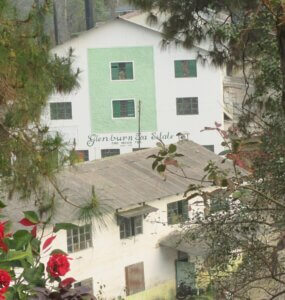
(Photo: P Dean, 2024)
After that we were taken to lunch at the Glenburn tea estate, courtesy of BACSA member Celia Brown, who was born and grew up there. At 3,500′ it was half the altitude of Darjeeling and considerably warmer, so we felt a little overdressed when we arrived.
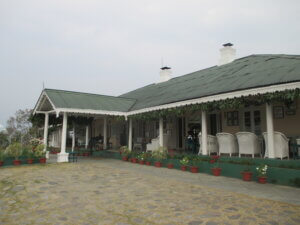
(Photo: P Dean, 2024)
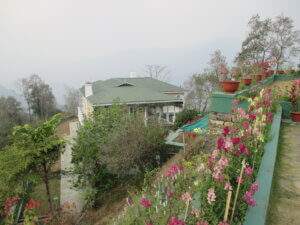
(Photo: P Dean, 2024)
We had an excellent lunch in beautiful surroundings, and bought copious supplies of the Champagne of Teas from the shop for the family back home.’
Paul Dean
Ed note:
•‘Darjeeling & the Dooars – Christian Cemeteries and Memorials 1842-1995’, a record of the cemeteries and isolated graves from ‘this corner of India’, by Eileen Hewson, which contains ‘monumental inscriptions and biographical notes on the planters and other notable tombs’, may be purchased through the Shop facility on the BACSA website.
Rachel Magowan
(Suggestions for BACSA website news items are always welcome – please send them to ‘comms@bacsa.org.uk’)
